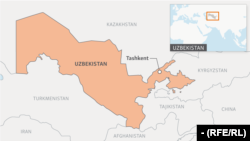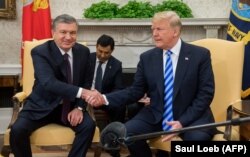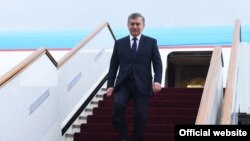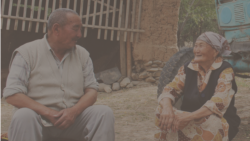
During this week's visit to Washington, which included a meeting with U.S. President Donald Trump, President Shavkat Mirziyoev was praised for changes he's been making since he took over as leader of Uzbekistan in September 2016 -- particularly moves to release activists and journalists imprisoned by his predecessor.
Uzbekistan is changing, to be sure. Besides freeing prisoners of conscience from the era of the late President Islam Karimov, Mirziyoev has improved ties with all of Uzbekistan’s neighbors, promised to end the odious practice of forcing people into the cotton fields during harvest time, vowed an end to torture in detention centers and prison cells, and publicly cast out from the ranks of government unpopular officials from the previous administration. Control over state media has loosened somewhat, allowing for some criticism of ineffective policies or lower-level officials.
But there are still questions about how far Mirziyoev is willing to go.
Which is why three small events ahead of Mirziyoev's U.S. visit are interesting, and possibly significant.
May 13 was the 13th anniversary of the Andijon bloodshed, dubbed by some the "Andijon massacre," when government troops opened fire on mainly peaceful protesters during unrest in the city. Uzbek authorities say 187 people were killed -- civilians, soldiers, and extremists. But there is considerable evidence, including eyewitness testimony, that the figure was several times that. There is a monument to tragedy in Tashkent.
Rights activists have attempted to visit the monument on the anniversary for several years, but they are routinely picked up leaving home or detained when they tried to reach the memorial.
This year a group that included rights activists Surat Ikramov, Raslynbai Akepov, Azimbay Ataniev, and Elena Urlaeva was allowed to lay flowers at the pedestal of the monument and hold a short memorial. It was the first time that happened.
Police were present but did not interfere.
The next day, Urlaeva and a few other activists stood outside the U.S. Embassy in Tashkent at 8 a.m. with a placard demanding the release of several people still in prison who Urlaeva said were being tortured.
Again, this sort of public activism usually ends with the activist being pushed into a vehicle and taken to the police station. But not this time.
Then, on May 15, a small group of activists was outside the U.S. Embassy, again protesting against corruption, calling for a truly independent judiciary, freedom for political prisoners, and an end to the requirement for exit visas to leave Uzbekistan.
Once again, police did not break up the small demonstration.
These are hopeful signs -- though not conclusive evidence -- that policies on public rallies and demonstrations have changed.
The groups involved in these events were small and their actions preceded Mirziyoev’s meetings with senior U.S. officials.
Larger demonstrations might not have been allowed to continue. And likewise if Mirziyoev had not been about to leave for his official visit to the United States.
But the ability of these groups to assemble in public and make their views known is something that has not been seen in Uzbekistan for many years. And it is a core right guaranteed in Uzbekistan’s constitution that has not been respected for all those years.
It is a small step, but arguably a hopeful one for Uzbeks.










